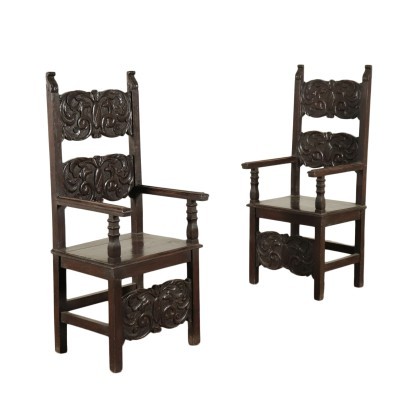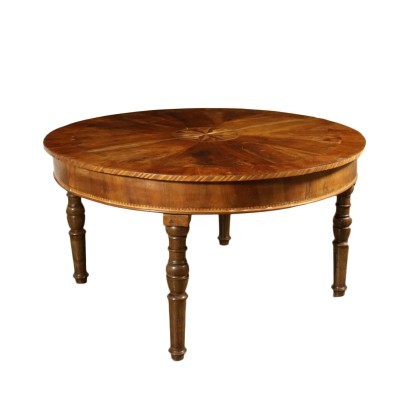Pair Of Neo-Renaissance Armchairs Walnut Beech Italy 19th Century
Features
Style: Neo-Renaissance (1820-1890)
Age: 19th Century / 1801 - 1900
Origin: Italy
Description
Supported by four uprights connected by stretchers, the front one is made of a band carved with leaf-like volutes, repeated, in pairs, on the backrest. Walnut, the seating is beechwood.
Product Condition:
Fair condition. Wear consistent with age and use.
Dimensions (cm):
Height: 133
Width: 58
Depth: 51
Seat height: 52
Additional Information
Style: Neo-Renaissance (1820-1890)
Nineteenth-century recovery and re-evaluation of forms and styles typical of the Renaissance.Find out more with the insights of our blog:
Classic Monday: a neo-Renaissance sideboard in dialogue with the past
The dictionary of antiques - Savonarola
Age: 19th Century / 1801 - 1900
19th Century / 1801 - 1900Main essence:
Beech
It is a semi-hard wood which, unfortunately, is easily wormed, therefore it is considered poor. Due to its light but variegated shades, from blond to reddish, it was nevertheless appreciated by French cabinetmakers. It was mainly used for furniture structures or, as an alternative to walnut, by provincial English furniture makers for popular works, mostly in the 1700s. The noblest use is due to Thonèt, who applied the steam bending of the beech in the making of the furniture, in particular for the chairs that took his name.Walnut
Walnut wood comes from the plant whose botanical name is juglans regia , probably originally from the East but very common in Europe. Light or dark brown in color, it is a hard wood with a beautiful grain, widely used in antique furniture. It was the main essence in Italy throughout the Renaissance and later had a good diffusion in Europe, especially in England, until the advent of mahogany. It was used for solid wood furniture and sometimes carvings and inlays, its only big limitation is that it suffers a lot from woodworm. In France it was widely used more than anything else in the provinces. In the second half of the eighteenth century its use decreased significantly because mahogany and other exotic woods were preferred. It could also interest you





























